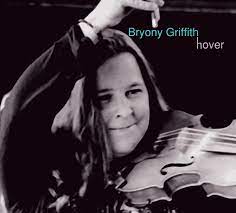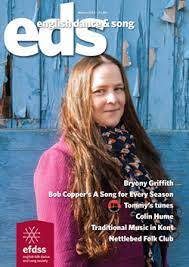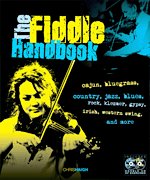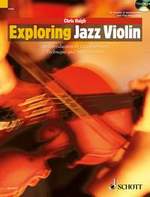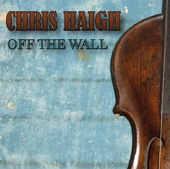
MENU TO FIDDLE STYLES:
The Future of English Fiddling
The feeling has often been expressed that English fiddling is the poor relation compared to Irish and Scottish. Since the 1990’s we have had many first class fiddlers concentrating on the English repertoire, but in terms of style, it could be argued that, in seeking an individual voice, English fiddle is still more about avoiding sounding Celtic rather than presenting its own English expression.
I want to find out if this is true, and if so, what could or should be done about it. Whilst researching this article I came across Bryony Griffith, whose playing seems to represent a very different direction to what seems to have become the mainstream of English fiddling, and I put many of my questions to her.
First of all, we need a summary of why, at the start of the late 20thC folk revival, English fiddling was in such a parlous state.
The research of Paul Roberts on pre-Victorian fiddling suggests that prior to industrialisation, England was pretty much on a level with Ireland and Scotland in terms of the technique, ornamentation and repertoire of its fiddle players There was an abundance of reels, distinctive 3/2 hornpipes, and fiddlers like James Hill in Newcastle were composing and performing state of the art tunes. It is likely that there was a broad patchwork of regional styles across the whole of the British Isles. Two factors then put the English tradition into steep decline.
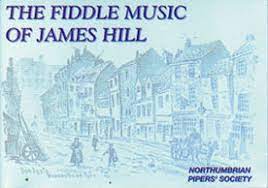
Industrialisation in England and the move from farm to factory disrupted the lives and traditions of many musicians. New dances came in such as the polka and waltz; ballroom dancing took over from barn dancing; brass band and light orchestras took over from village string bands.
At a time when English culture was seen as the dominant force in the British Isles, the old country style of fiddling would have been seen as backward and dated, and anything new and modern was jumped upon. In Ireland and Scotland, conversely, a new nationalism was growing and traditional folk styles were seen as symbolic of national pride and individuality, even a form of resistance against the oppressor. Organisations such as the Gaelic League in Ireland were set up to actively preserve and promote folk arts such as music and dance.
The result of these two factors was that when the English folk revival began in the 60’s, there was little in the way of role models left for English fiddlers. There was a thriving and unbroken tradition in Scotland and Ireland, but the traditional English fiddler was virtually extinct. One of the key figures of the early 20thC was Jinky Wells (1868-1953). He became fiddler for the Bampton Morris in Oxfordshire in 1899. He was ambitious and dynamic, even doing solo Morris tours singing, dancing and playing the fiddle. He was visited and recorded by many folklorists including Vaughan Williams and Cecil Sharp. Unfortunately, most of the surviving recordings of his playing date from the 1930's onwards, when he was almost certainly past his "record by" date- in his 70's and arthritic. Thus these, and other similar recordings have been used to corroborate the view that English fiddle style is pedestrian and unadventurous, with stress on the first beat of the bar, with mostly separate bows, and little ornamentation. In an article for Fiddle On magazine, Dave Townsend argues that these recordings do no justice either to Wells or the tradition he represented. There were other contemporaries of Wells; Bertie Clark, Sam Bennett, Stephen Baldwin and Walter Bulwer for example. Compare any of them to Scott Skinner or Michael Coleman, whose playing would inspire fiddlers for generations to come, and you can see why in this contest England got, and deserved, “nul points’.
James Scott Skinner
For revivalist English fiddlers of the late 20thC, the way ahead was clear. If they wanted to be different from the flashy technique of their Celtic cousins, they would have to avoid distinctive ornaments such as the roll and the bowed triplet. A plain, unornamented style was established, and reels, the perfect vehicle for display of virtuosity, were virtually eliminated from the repertoire. Respect was given most to those fiddlers who played an appropriate style for Morris dancing. At a time when Ireland and Scotland were both establishing huge networks of teaching and competition for their young musicians, and producing commercially successful instrumental bands led by fiddle players, English fiddlers were happy to take a humble supporting role as accompanists.
Possibly as a result of this diffident approach to English fiddling, a number of significant artists developed as fiddle singers; Eliza Carthy, Jon Boden, Seth Lakeman, Chris Wood, Roger Wilson, Jackie Oates and Nancy Kerr, to name but a few. It was Roger Wilson who pointed out to me years ago that it was scarcely possible to make a name for yourself purely as a fiddle player within the English tradition, whilst singing allowed you to front a band and build a career.
Eliza Carthy
I am by no means the first to have suggested that English fiddle had boxed itself into a corner. In 2014 The Strad magazine published a fascinating article by Jon Boden about “The Difficulties of finding an authentic playing style for Traditional English tunes”. Whilst other styles have coalesced, English fiddle is still in a nebulous state looking for a sense of direction. He concludes that to have an authentic voice , the fiddle must stylistically follow the melodeon. At the risk of offending all melodeon players, this seems to me to be setting your sights rather low.
The year after this article was published, there was an English Fiddle Symposium at the Sage, Gateshead, fronted by Eliza Carthy. Among the aims was to “discover the state of the nation for the fiddle in traditional English music”. No doubt much of interest was discussed, but at as far as I’m aware there was no publication afterwards, no successful call to arms, no renewal of purpose and no fresh charting of the way forwards. One of those who attended and gave a presentation was the young fiddler Bryony Griffith. I first came aware of her when she approached me about the possibility of appearing at the London Fiddle Convention. I opened- I have to admit, with low expectations- her solo instrumental English fiddle album “Hover” and was more than a little surprised and delighted.
Her style contrasts markedly with that of the archetypal revival English fiddler, in particular using a much broader palate of ornamentation, including plenty of bowed triplets and rolls alongside the more conventional drones. Her playing is clean and precise, and with a constantly changing set of variations on each repeat of a tune. She displays a virtuosity which puts to bed the idea of accepting a subservient role as accompanist.
So is she a folk outsider, a musician like myself who dabbles in many styles without being fully immersed in any of them? Far from it. She has been playing English traditional music since her teens, working with ceilidh bands such as Bedlam, and with dance sides White Rose Morris, Dog Rose Morris and the Newcastle Kingsmen. Her choice of material shows a deep appreciation of the link between traditional tunes and their dance context, and a strong commitment to the English tradition. Her latest project is the launch of a four-piece fiddle group, the English Fiddle Ensemble
I asked her about the evolution of her fiddle style:
“The more you play, especially at ceilidhs when you’re doing the same tune over and over, the better you get and your fingers and bow start responding more quickly so you realise that there’s time to do something more interesting with a single note, so your bow starts to do extra things, like triplets and your fingers start to do extra twiddles where you didn’t have time before. And before you know it your fingers just do it and your bow just adds bits naturally…and after a while that has become ‘what you do’, which is essentially, I guess, your STYLE!
But all that time, you’re keeping to the pulse for the dancers and keeping to a tempo, so it becomes quite uniform and when you learn a new tune, your fingers and bow just do what you do naturally. BUT, you still need the dancers to be able to hear the tune, so you don’t want to do too much and over do it. You don’t want it smudgy, which is sometimes how I hear other people play and it becomes hard to distinguish what tune they’re playing cos there’s too much going on. When playing the same tune several times, it also gives you chance to put more expression in, because you don’t want the tune to sound the same every time round, so you find variations and add a bit of colour with more expressive bow and dynamics, which are often absent in folk tunes.”
I wondered if she was aware that her style was at odds with the mainstream?
“I guess I’ve always purposely tried not to copy anyone else’s style and have stubbornly stuck to my own ways of playing even when people have been derogatory about it. I think I try to get this across to my students too, that they need to find their own way and style, rather than just teaching them to play like I do. I always try and push English tunes, but not everyone is as interested in that as I am! There is of course great merit in listening to different styles from all countries and having a broad repertoire, but I seem to have pigeon holed myself in distinctly English and latterly Yorkshire tunes.”
Talking of people being derogatory, I was struck by the hostile tone of a particular review of her album “Hover” from an influential figure at the heart of the English folk establishment, referring to her “scant knowledge of the genre”, implying that she knew nothing about dance, and was generally tampering with things that should really be left to her elders and betters. Of course, every artist has to contend with bad reviews, but could this be a symptom of the mindset which is holding back English fiddle from its straightjacket?
“I feel like….people still think we should stick to those odd ‘rules’ they seemed to follow a generation ago. I guess it depends a lot on whose hands something falls into so they probably feared we would do something dreadful...like make it popular!!! That's not to say that there aren't other people who have supported us/me enormously and pushed us and enjoyed what we do, but the overwhelming feeling from certain people has always been that we might do something they don't want us to and go off on our own tangent, therefore we should not be encouraged! I kind of felt like they weren’t our tunes…they’d already been ‘claimed’ by someone else and so we shouldn’t be messing with them.
The biggest problem with that review (apart from the fact that I honestly thought he would like it and be pleased that someone had been arsed to make an actual album of solo English fiddle tunes…cos no-one else had done that before), is not that he is not particularly complimentary to me but that the overwhelming feeling and theme is that he's having a go at our whole generation and using me and my album as a vehicle to do so, to try and make sure everyone knows that it was HE who found the tunes, made them 'popular' and no one should ever forget it....it's just not the right attitude!! I want to share and make other people as fiercely proud of traditional English tunes as I am and to want to play them...not just to think that English tunes are naff or non-existent. If I ever play a trad English tune to new students/pupils in school, they automatically say it's Irish or Scottish and don’t believe me when I say England has traditional tunes and fiddle players too!”
So is there actually a model anywhere in England of how the future direction of folk playing might be fostered and encouraged?
“When you go up to Northumberland you can see how nurturing the next generation works. People like Alistair Anderson and David Oliver embraced the youngsters and the scene has progressed and created some marvellous young fiddlers with a very ‘Northumbrian’ style. Northumberland is seen to have its own identity, perhaps aided by the presence of Irish culture there, and the proximity to Scotland, but it's still very different. Ultimately, this led to the creation of a degree in folk music in Newcastle and then in turn to folk being included at Leeds College of Music, which is a conservatoire."
Alistair Anderson
So how would Bryony like to see the future, both for herself and for English fiddling in general?
“I want to pass on the tradition in an exciting, inspiring way...too many young fiddlers don't think English tunes are exciting. I have plans for when I get back to teaching, to start a programme in the local primary schools that sees the students come right through from beginner to being really accomplished and specialising in English tunes. I want big gangs of them playing Traditional English/Yorkshire tunes in massed concerts with their families and friends enjoying watching them and being proud of our traditions. I want the standard of playing to be raised so that we can compete with our Celtic cousins and do cultural exchanges where we have something engaging and challenging to offer and share. I want English fiddle music to have an identity that more people recognise, are proud of, and want to play. Sticking it in a box has damaged it more than anyone playing the tunes could ever do, so there shouldn't be any fear of the next generation getting hold of it and taking it wherever they want.”
So what happens when you give back to English fiddle tunes the ornaments that they once had, along with the youthful drive, enthusiasm and virtuosity which are taken for granted in Ireland and Scotland? Does the Green Man emerge weeping from the forest? Does Saint George throw away his sword in disgust? Do the Little Folk cross the Irish Sea and dance with glee on the grave of Cecil Sharp?
Far from it. The tunes of old England are once more heard in their former glory, and the future of English fiddling is finally secure!
This article first appeared in Living Tradition magazine
